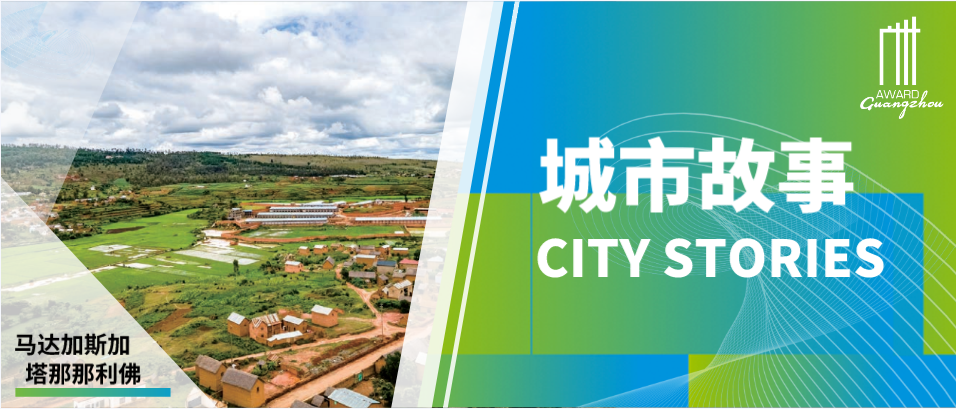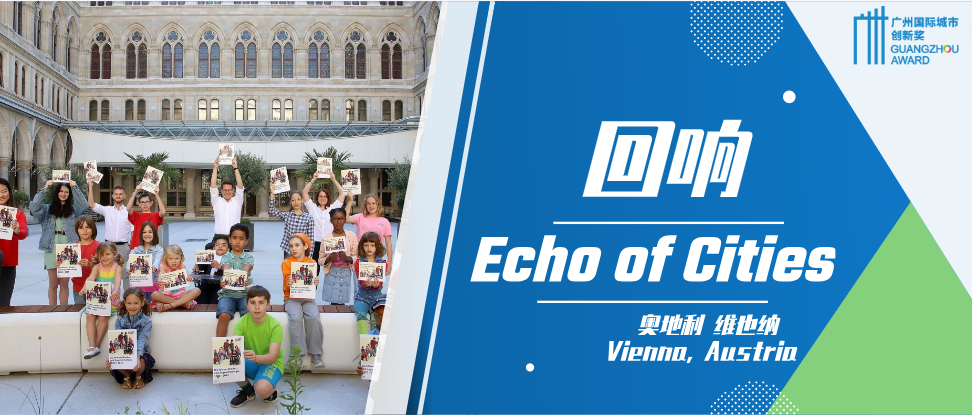Valenzuela, Philippines
Education 360-Degrees Investment Program
Background Information
The city government is now enacting an ordinance that will make the 360-degrees Investment Program a sustainable project. The best way to keep the program going, whoever is holding office at the city hall, is to make people feel that they own the program. If they have seen how it works, they will make sure that this program lives on.
Goals of the Initiative
Basic education is the responsibility of the central government. The Valenzuela city government took it upon itself to transform the system through which education is delivered. It took charge of planning and implementing a program using a bottom-up approach. Instead of piecemeal reforms, the city government embarked on a holistic approach that will strengthen all the processes which affect basic education. Instead of planning from the top, planning emanated from the residents, to enable them to have a stake in the quality of public education.
Empowerment starts with informing and listening to residents. The city government regularly conducts consultations with different sectors, and holds school summits and workshops with teachers and parents. These are opportunities for city officials to discuss the state of education in the city: how many are in school, how many are dropping out, how many are performing well, and why children are underperforming. Then, the workshops turn into a listening session. Residents, local leaders, parents and teachers share their dreams for the students and the realities that they face. Their difficulties and inadequacies become the basis of programs that will be collaboratively undertaken by the community and will be funded by the SEF budget. Thus, the Education 360-Degrees Investment Program was formulated through consultations, listening and participatory planning.
Parties and Partners to the Initiative
Parents are the common denominator in all components of the program: The parents wake up at dawn to help out in the kitchen. They help feed the children and wash the lunchboxes. The parents also agree to send their children to summer school, and check their kids are doing their homework. Moreover, parents became trainers of other parents, convincing them of the advantage of being involved in their children’s school affairs.
Thus, without the participation of parents, the education program of the city government would not have taken off as it did.
Resources Used for Implementation
Aside from the funding that the city government is allocating to the program, the Local School Board along with the Department of Education helped with the financial needs of the program. But more than the money, it is the help and efforts of the main key players of the program, the teachers, the volunteers and the parents.
The “Nanay-Teacher” program was conceptualized and has been managed by parent leaders. The two-day Parenting Camp engaged the parents in planning how they can collaborate with teachers in raising students who are both educated and of good character. The participants took it upon themselves to organize parenting workshops in their own schools. They held themselves responsible for implementing initiatives that will support schools and their children.
The feeding program is also powered by mothers. Each day, at the crack of dawn, and all the way to heat-filled afternoons, some 800 parent volunteers prepare the ingredients and cook the food following a standard menu, pack the food into lunch boxes, deliver them to schools, supervise the feeding of the children, wash the lunch boxes, and tidy up the kitchen.
The Reading Camp was also an empowering exercise. Volunteers, 605 of them, served as aides to hundreds of school teachers. The latter gave up their summer vacation to help marginalized students. The 360-Degrees Investment Program has provided platforms for participatory governance to flourish. Residents are recognized as equal partners in policy formulation, planning and implementation. Citizens are involved in program evaluation using a scorecard and citizens’ assemblies.
Innovation for the Initiative
This initiative is evolutionary in the sense that the city government went down to the community to discover what the major problems are that the children are facing in terms of education, and then worked hand-in-hand with the parents to come up with a solution. Along the way, we encountered problems but we’re able to solve and learn from them.
The feeding and remedial reading programs are trailblazers, because they are the only programs in the country with such magnitude and sustainability. Despite the scale, these programs are cost-efficient since they are run by volunteers. The lunch per student is only PhP 11.00. The reading program was delivered by volunteers with a love for children as the only requirement.
The Summer Reading Camp is the first after-school intervention program which is large-scale and run by the local government. Such programs are traditionally found only in exclusive private schools. The city government customized the SRA approach where learners are able to progress at their own pace. Students took home green and red reading workbooks that reinforced their learning at home. The "Nanay-Teachers" gained connection and familiarity with their learning in the reading camp.
The "Nanay-Teacher" is the first structured, organized, and parent-run program in the country. It institutionalizes parents' involvement in the education of their children. Normally, parents in public schools relegate the task of education to teachers. The program has formal learning components for parents, and provides several opportunities where parents reflect on their shortcomings and write letters of forgiveness to their children.
Traditional interventions in education give emphasis on hardware – classrooms and facilities. The Education 360-Degrees Investment Program weighed on other pressing concerns that the eye cannot see, such as malnutrition, disengaged parents, inability of children to write and capacity building for teachers.
The program affords the poorly-resourced local public schools with the luxury of exclusive private schools intervention programs. It is achieved by harnessing the strength of the community to lower costs, making it more feasible to implement on a larger-scale. This program clearly addresses the underlying shortcomings of the system beyond the traditional façade or superficial remedies.
Innovation has been applied in
The first and foremost reason for establishing the Education 360-Degrees Investment Program is to revolutionize the public education system in Valenzuela City. It aims to adopt in public schools the best practices of local and international private schools that give their students the strong education foundation and competitive advantages later on when they seek career opportunities. Innovation is loosely defined as the application of better solutions that meet new requirements and unarticulated or existing needs. This is accomplished through more effective products, processes, services, technologies, or ideas that are readily available to markets, governments and society. Education 360-Degrees is innovative because it uses tools that are readily available in the private learning setting and directly imports it for use in public education. It is trailblazing and bold because it employs learning tools that were once thought to be only suited for the well-off few who study in private learning institutions. The program was able to roll out its initiative by pairing down cost implications through the power of volunteering. It aims to truly use education as a tool for equal opportunities, wherein the quality of public education is equal or even better than private-sector education standards.
Obstacles and Solutions to the Innovation
Like any grand project, Valenzuela City’s Education 360-Degrees Investment Program has faced, and is still facing, challenges. A crucial factor is sustaining its gains and objectives in the course of its day-to-day operations.
In the feeding program for all day care students and severely malnourished students in the K to 6 levels for instance, even the sheer volume of lunch boxes that need to be filled on a daily basis is a challenge. The kitchen relies on volunteer-parents to peel and cut the vegetables, to mix the ingredients, to wash the utensils used and to fill each lunch box with the correct amount of rice and viand.
The volunteers come from many fronts: they are employees of the city government or one of its elected officials, barangay health workers who put in a few hours of kitchen work each week, or members of a women’s club who are assigned one day each week.
Still another issue is interruptions of water and electricity that tax the workers’ patience. And then, there are occasional clashes of personality among kitchen workers and volunteers.
On the other hand, the challenge for the reading camp was making students from Grade 2 and Grade 5 who are considered slow readers come to school every day in the summer.
The project implementers were worried that the children would rather enjoy their summer vacation than attend the camp every day. Moreover, the parents might not support their children in reading camp, given the fact that children are expected to help out with household chores or augment the family income. Some families cannot afford money for transportation and other needs for the duration of the reading camp.
These problems were addressed in a simple manner; a manager of the kitchen was appointed to make sure the work inside was good and that the volunteers and workers had a good relationship. Furthermore, the local government assured parents that they don’t have to spend money on the children’s snacks, textbooks, and workbooks in the reading camp, and that was enough to encourage the parents to let their children attend the camp.
Outcomes and Assessments
The gains of the program are shown not only in the pride of every Valenzuelano in their city, but are demonstrated by the following performance indicators:
There are zero Grades 3 and 6 non-readers in Valenzuela. The 2,844 students who have been tested as non-readers are now able to read. The 18,299 non-readers and frustrated readers in Grades 3 and 6 were reduced to merely 272 students, or an impressive decrease of 98.6 percent. Those who completed the reading camp have continued to blossom. Rustom Soriano a former nonreader from Malinta Elementary School emerged as the top performer in his Grade 6 class.
Eighty-eight percent (88 percent) of the students for the SY 2013-2014 under the feeding program are no longer considered malnourished and 78 percent have progressed in terms of academic performance.
The students in the Valenzuela Mathematics and Science High School continue to excel. While the average score of high school students in the National Achievement Test for the SY 2013-2014 is 45 percent, the ValMaSci students obtained an average of 84.57 percent and a remarkable average of 97.25 percent in Mathematics.
Participation and involvement of parents in learning activities has soared. Out of a total number of 53,794 Nanay-Teacher parents, 52,380 or 97 percent have embraced the program. Consequently, 17 out of 39 public elementary schools (44 percent) have been reported to have 100 percent participation in the school activities, while the majority have reached 90 percent.
The completion rate for children who are able to finish schooling is high at 85.0 percent for elementary-level, and the cohort survival rate in Grade 6 is high at 86.64 percent.
The city Government is nationally recognized by the DepEd with the biggest and sustainable remedial reading and feeding program in the country.
Methods Applied
The first component of the program is ensuring that students are provided with the best learning environment. The city government built on the efforts of the past administration to provide adequate infrastructure. But it has been through the efforts of the current mayor that two (2) new elementary and four (4) new high school campuses totaling 100 classrooms have been constructed. The newest initiative of the city is building the most modern science and mathematics high school in the country.
The second is engaging parents to serve as a “Nanay-Teacher”. To ensure that learning and development start and continue at home, the capacity of parents to become teachers was built through a parenting camp and school workshops. Through reflection and peer-learning, parents commit to be closely involved in their children’s activities.
The third is the development of a curriculum that is based on the needs of students. An assessment of students' competencies provided the basis of the capacity building program of teachers and students, as well as the learning materials that they needed.
The fourth is capacity building of teachers to address the inability of children to read well. Almost 78 percent of the elementary students in the city were found to be illiterate or to have poor reading skills using the Philippine Individual Reading Inventory Test (Phil-IRI). The city embarked on a one-week training camp for teachers’ remedial reading instruction.
The fifth is a summer reading camp for almost 16,000 elementary school children. During the entire summer season, non-readers and frustrated level readers participated in a half-day session where their love for reading was nurtured. The program was fuelled by volunteer education students from the city’s local university, the Pamantasan ng Lungsod ng Valenzuela, who served as teaching assistants.
The sixth is a K to 6 (kindergarten to grade 6) in-school feeding program. Some 16,667 underweight children in Day Care and Kindergarten to Grade 6 participate in the program which is run by parent-volunteers who are mentored by the Ateneo Center for Education Development.
The seventh is a performance incentive program. The city government rewards school and PTA performers based on defined criteria such as participation in parents' activities. The incentives are based on priorities set by parents and teachers which are in turn funded from the SEF. Although there are no formal sanctions on non-performers, they watch with envy as performing schools and PTAs are rewarded in a city-wide recognition day.
-
 Urban Innovation in China | Shenzhen: How to Maintain Momentum to Achieve Carbon Peak by 2030 While Leading Green and Low-Carbon Development?
Urban Innovation in China | Shenzhen: How to Maintain Momentum to Achieve Carbon Peak by 2030 While Leading Green and Low-Carbon Development? -
 City Stories | Antananarivo, Madagascar: Building Resilience in the City Food System
City Stories | Antananarivo, Madagascar: Building Resilience in the City Food System -
 In Focus | International Women’s Day: Building a Women-Friendly City
In Focus | International Women’s Day: Building a Women-Friendly City -
 Echo of Cities | Vienna, Austria: The Youth Melody of an Ancient City
Echo of Cities | Vienna, Austria: The Youth Melody of an Ancient City























 Tel: +86 20 3780 4434
Tel: +86 20 3780 4434 Email: info@guangzhouaward.org
Email: info@guangzhouaward.org Address: Rm 1609, FuLiXinTianDi, No.307 Guangzhou Dadao Zhong, Yuexiu District, Guangzhou, Guangdong, 501600, PRC
Address: Rm 1609, FuLiXinTianDi, No.307 Guangzhou Dadao Zhong, Yuexiu District, Guangzhou, Guangdong, 501600, PRC




